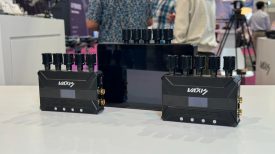Sekonic has announced the new C-800 SpectroMaster which adds SSI (Spectral Similarity Index) measuring capabilities. Here at Newsshooter, we have been using the C-700 SpectroMaster in all of our lighting reviews to provide a consistent benchmark that we can compare all of the different lights. With more RGBW lights hitting the market, the addition of SSI is much needed.

Key Features
- Measures LED, HMI, Fluorescent, Tungsten, Natural Light and Flash, from 380 to 780 nm
- Expanded Color Rendering Properties (CRI, SSI, TLCI, TLMF, TM-30-15)
- Extended Color Control Parameters (Hue/Saturation, CIE 1931 x, y chromaticity coordinate).
- Wide measurement range of Color Temperature (1,600 to 40,000K) and illumination (1 to 200,000lx in ambient light, 20 to 20,500lx in flash light)
- User-friendly design: 270 degrees swivel head, dark calibration without a cap, large 4.3” color touch panel LCD and Customize function
- Various displays (Text, Spectrum Graph, Spectrum Comparison, CRI, CRI Comparison, SSI, TLCI/TLMF, TM-30-15, Lighting Filter for Rosco© and LEE©, C amera Filter for Kodak Wratten©, LEE© and Fuji©, Multiple Lights Comparison, White Balance Correction)
- Measurements of Kelvin (K), Illuminance (lux/fc), LB/CC Filters (for Camera Lens or Lighting Filters), LB/CC Index, CRI (Ra, R1 thru. R15), ⊿uv, SSI, TLCI, TM-30-15(Rf, Rg), CIE1931(x, y), Hue, Saturation
- Up to 99 data measurements can be stored in memory.
What is SSI?
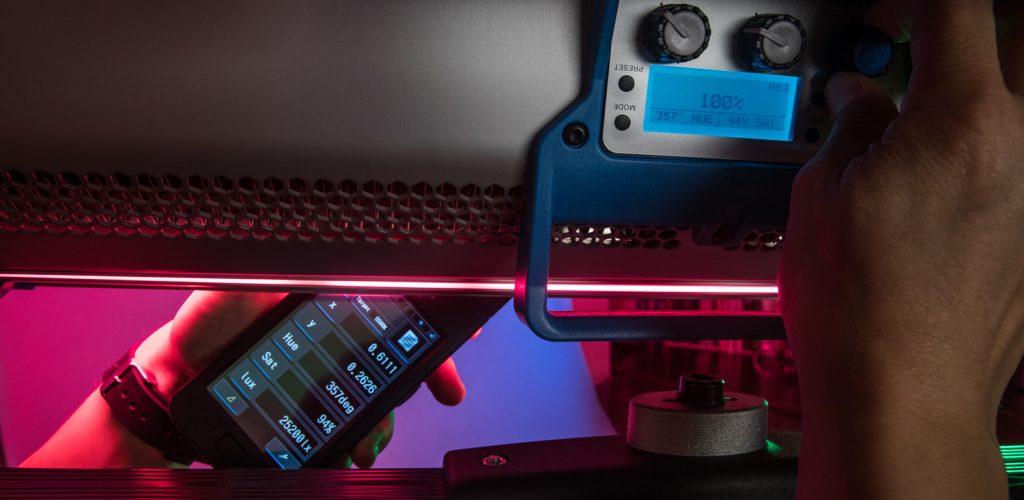
The C-800 is teh first and only meter to include SSI or Spectral Similarity Index. SSI was developed by the Sci-Tech Council of the Academy and gives the user the ability to set any light as a standard, or use predefined standards (such as CIE D55), and then gives other lights an SSI score based upon how well they will match. Here’s a short description of the importance of SSI from the Oscars website.
The Spectral Similarity Index, or SSI, addresses problems with existing indices, such as CRI, that have become evident with the emergence of solid-state lighting (SSL) sources such as LED’s.In contrast to the relatively smooth, continuous spectral power distributions of blackbody emission, tungsten incandescence, and daylight (and the ISO standardizations of these sources), many solid-state sources are characterized by peaky, discontinuous, or narrow-band spectral distributions. These spectral distributions can wreak havoc with color rendition (by both film and digital sensors), since film and digital cameras are all expressly designed to work with, and are indeed optimized for, standard tungsten and daylight. This problem is exacerbated by the fact that CRI, for example, is based on human color sensitivity rather than camera sensitivities, and is determined by the rendering of a small number of test colors, which are mostly of low saturation and do not include skin tones. The TLCI measures rendering by an idealized three-chip camera, which does not adequately account for the differing spectral sensitivities of single-chip cinema- or still-camera digital sensors.For these reasons, SSI is not based on human vision, or any particular real or idealized camera, and does not assume particular spectral sensitivities. Rather, it measures how close a given spectrum is to a specified reference spectrum, such as tungsten or daylight. It is a single value representing the quality of the curve fit to the reference spectrum, and indicates the predictability of color rendering with the given source. SSI is scaled so that a score of 100 indicates a spectral match; high values indicate predictable rendering by most cameras (as well as “quality” of visual appearance). Low values may produce good colors with a particular camera but not with others. SSI is useful for cinematography, television, still photography, and human vision.
You can learn more about SSI at https://www.oscars.org/science-technology/projects/spectral-similarity-index-ssi
As well as SSI, the C-800 includes all of the current measuring modes such as TLCI (Television Lighting Consistency Index), TLMF (Television Lighting Matching Factor), TM-30-15 (Technical Memorandum) and of course CRI (Color Rendering Index).
Matching Light Sources
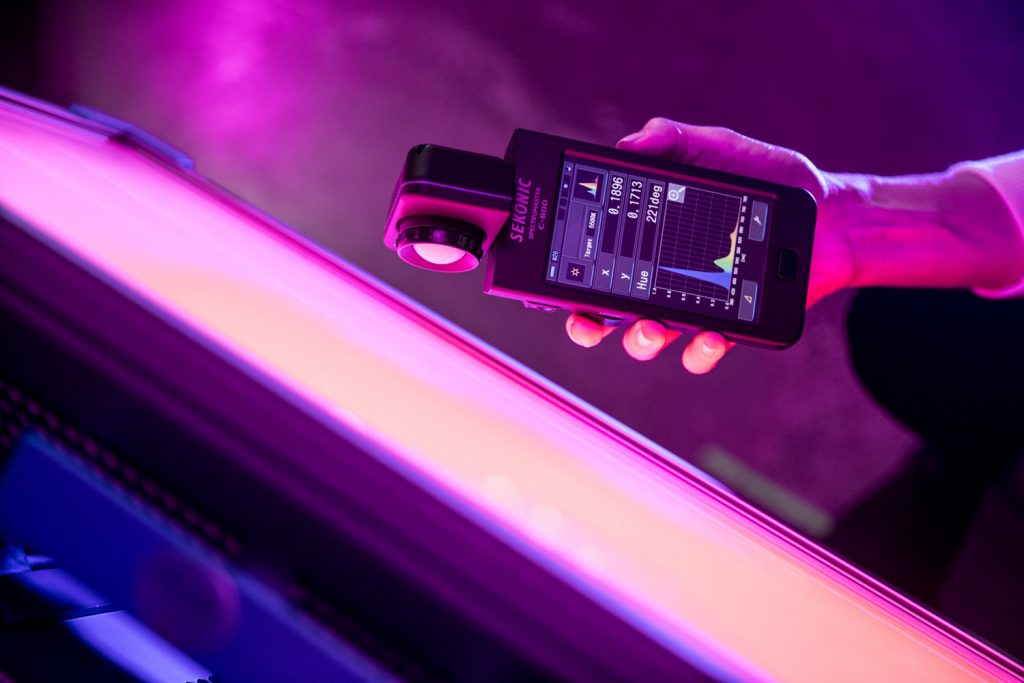
Just like how different lights rated at daylight or tungsten often have varying kelvin colour temperatures, it is the same with RGBW lights. One light setting for red could be totally different when compared to another light manufacturer. Using the C-800, you will be able to measureCIE1931 (x, y) match lights more accurately. Hue & saturation is also measured as not all lights have the ability to adjust X & Y coordinates. You can also use this mode to match RGB leds to any existing light source.
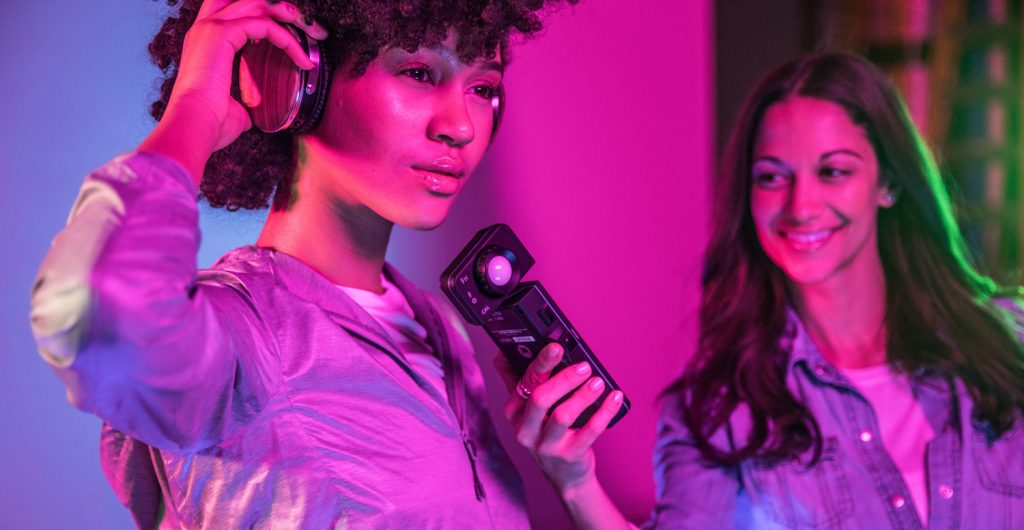
Just like the C-700, the C-800 has a large 4.3″ color touch screen and ergonomic button layout. The swivel head can rotate up to 270-degrees to measure at any angle and there is also a built-in dark slide for on-set.
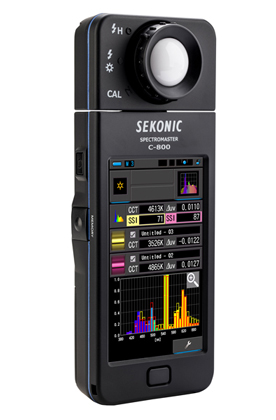
The C-800 is currently on pre-order for $1,499 USD and is expected to ship in December.
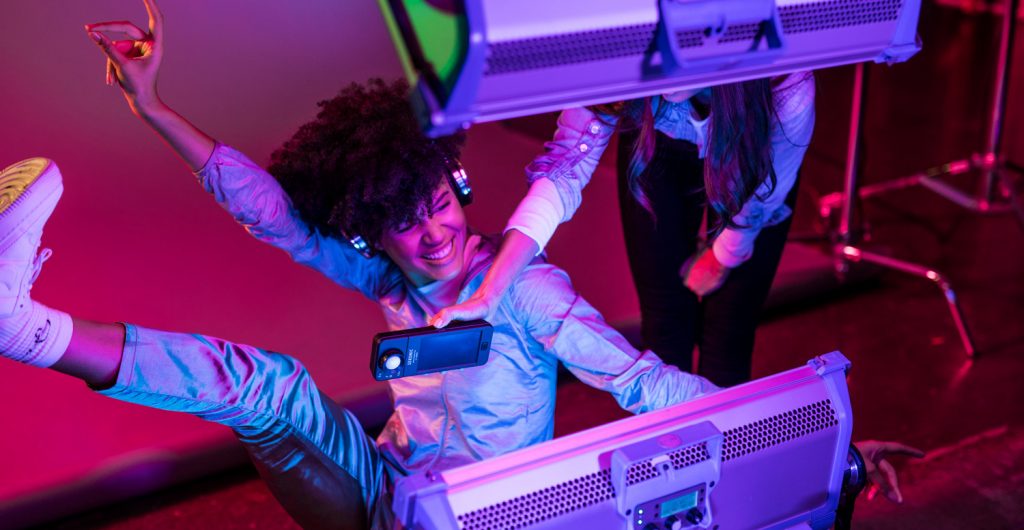
Light Meter Basics
If you haven’t used a light meter or color meter before, Jem Schofield has a great overview video on his channel going over the different options available, including the Lumu meter that attaches to an iPhone via the lightning connector.





